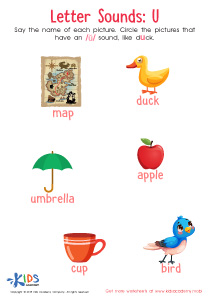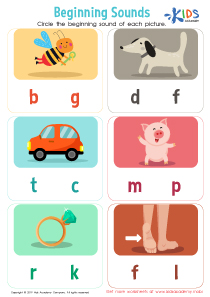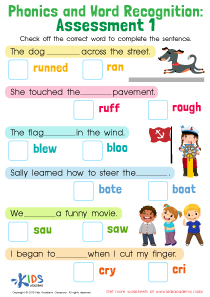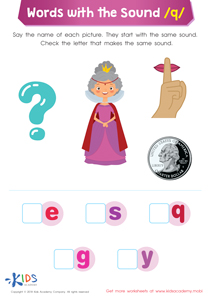Easy Vowels and Consonants Worksheets for Ages 4-5
1 filtered results
-
From - To
Introducing our "Easy Vowels and Consonants for Ages 4-5" worksheets - the perfect tool to kickstart your child's journey into the world of letters and sounds! Tailored specifically for young learners, these worksheets are designed to make learning both fun and effective. Through engaging activities and colorful illustrations, kids will explore the basics of vowels and consonants, laying a strong foundation for reading and writing skills. Whether it's understanding the difference between 'a' and 'b' or mastering the sounds each letter makes, our worksheets cover it all in an easy-to-grasp manner. Unlock the door to literacy for your little one with our Easy Vowels and Consonants worksheets today!
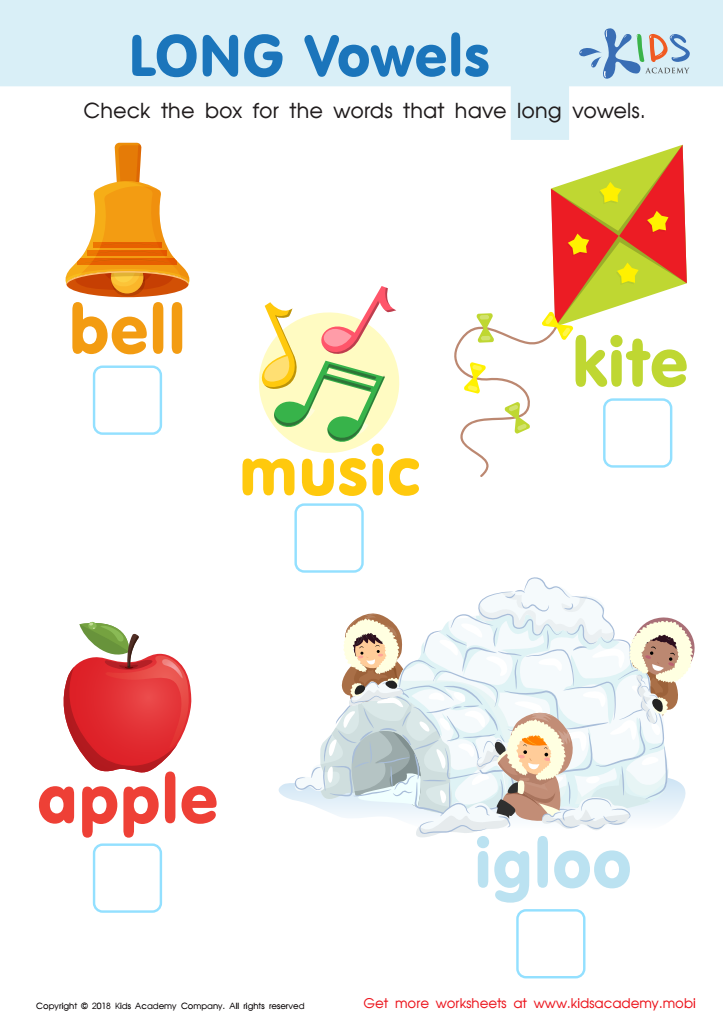

long vowels Worksheet
Easy Vowels and Consonants worksheets designed specifically for ages 4-5 are an indispensable learning tool in the early stages of literacy development. At this critical age, children are just beginning to navigate the vast world of language and literacy. Introducing them to the building blocks of the English language—vowels and consonants—through easy and engaging worksheets can significantly enhance their understanding and retention.
These worksheets are tailored to meet the developmental needs and learning pace of young learners. They simplify the complexities of the English language, making it accessible and enjoyable for children. Through a variety of activities, including matching games, letter tracing, and simple word formations, these worksheets provide a hands-on learning experience that stimulates children's interest and curiosity in reading and writing.
The focus on Easy Vowels and Consonants for Ages 4-5 ensures that the learning material is age-appropriate, encouraging children to learn at their own pace without feeling overwhelmed. This foundational knowledge paves the way for more advanced literacy skills, as understanding the role and sound of each letter is crucial for reading fluency and spelling accuracy.
Moreover, these worksheets offer a structured learning pathway, gradually introducing new letters and sounds, reinforcing learning through repetition and practice. This structured approach builds confidence and mastery over time, fostering a positive attitude towards learning that will benefit children throughout their educational journey.
 Assign to My Students
Assign to My Students



